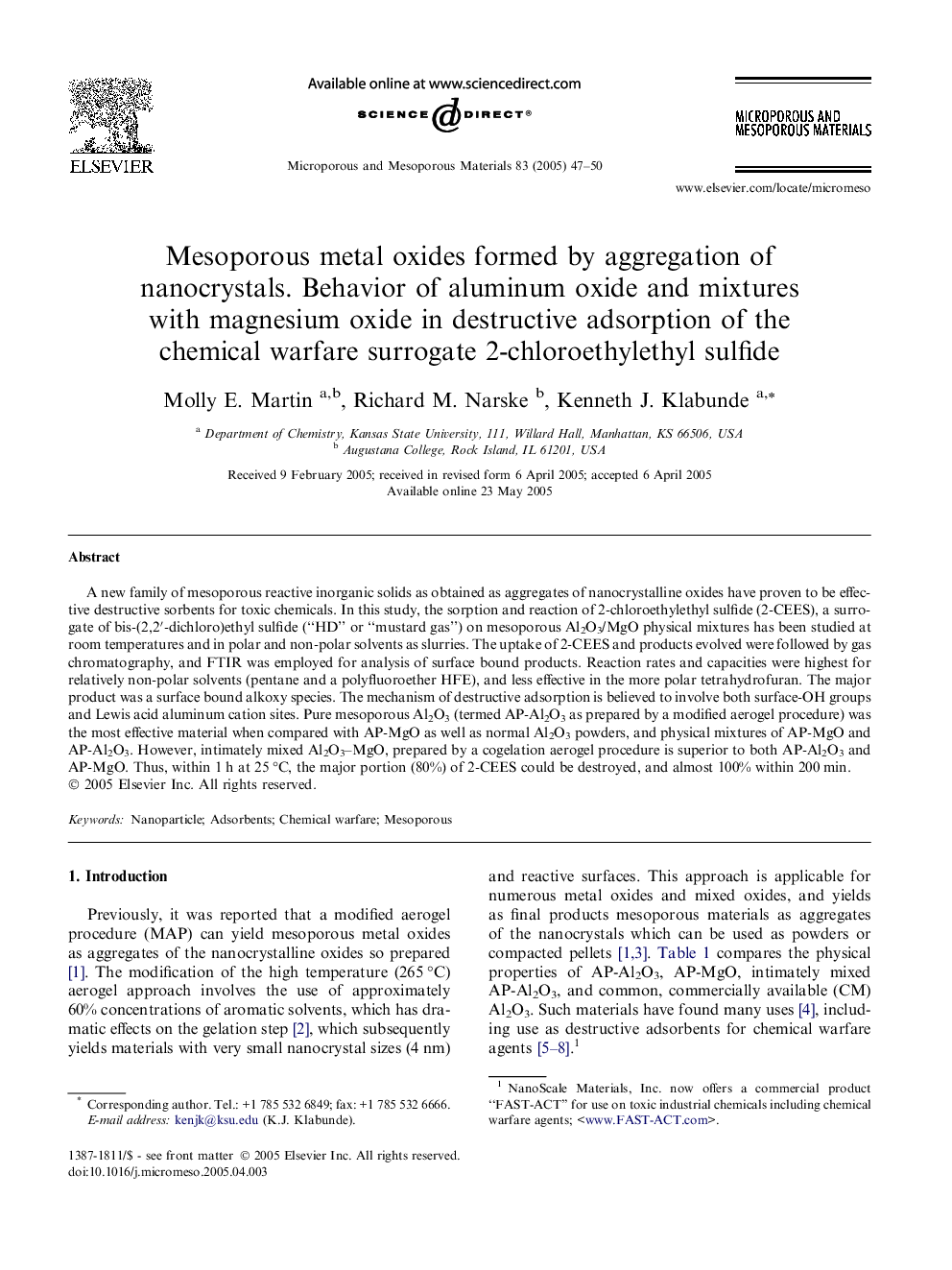| Article ID | Journal | Published Year | Pages | File Type |
|---|---|---|---|---|
| 9617633 | Microporous and Mesoporous Materials | 2005 | 4 Pages |
Abstract
A new family of mesoporous reactive inorganic solids as obtained as aggregates of nanocrystalline oxides have proven to be effective destructive sorbents for toxic chemicals. In this study, the sorption and reaction of 2-chloroethylethyl sulfide (2-CEES), a surrogate of bis-(2,2â²-dichloro)ethyl sulfide (“HD” or “mustard gas”) on mesoporous Al2O3/MgO physical mixtures has been studied at room temperatures and in polar and non-polar solvents as slurries. The uptake of 2-CEES and products evolved were followed by gas chromatography, and FTIR was employed for analysis of surface bound products. Reaction rates and capacities were highest for relatively non-polar solvents (pentane and a polyfluoroether HFE), and less effective in the more polar tetrahydrofuran. The major product was a surface bound alkoxy species. The mechanism of destructive adsorption is believed to involve both surface-OH groups and Lewis acid aluminum cation sites. Pure mesoporous Al2O3 (termed AP-Al2O3 as prepared by a modified aerogel procedure) was the most effective material when compared with AP-MgO as well as normal Al2O3 powders, and physical mixtures of AP-MgO and AP-Al2O3. However, intimately mixed Al2O3-MgO, prepared by a cogelation aerogel procedure is superior to both AP-Al2O3 and AP-MgO. Thus, within 1 h at 25 °C, the major portion (80%) of 2-CEES could be destroyed, and almost 100% within 200 min.
Related Topics
Physical Sciences and Engineering
Chemical Engineering
Catalysis
Authors
Molly E. Martin, Richard M. Narske, Kenneth J. Klabunde,
